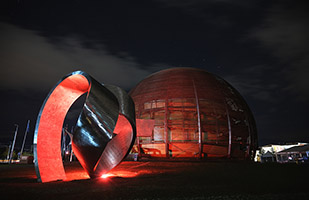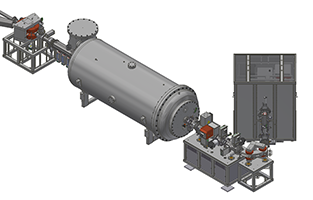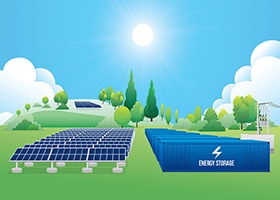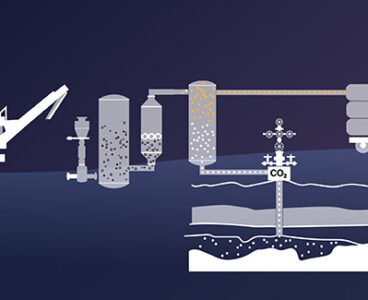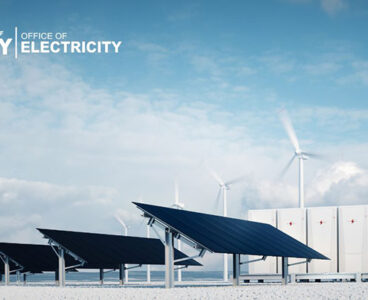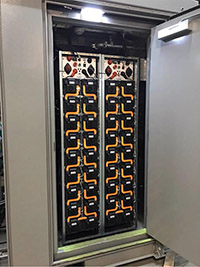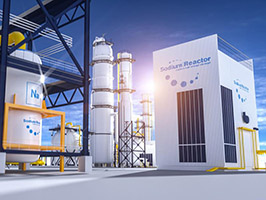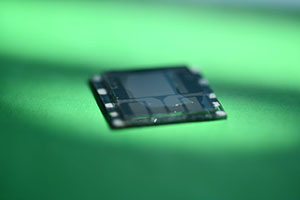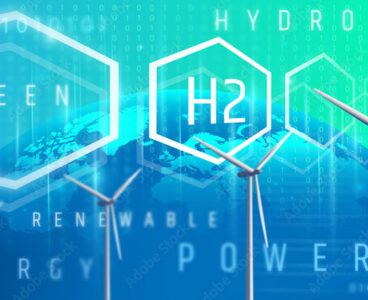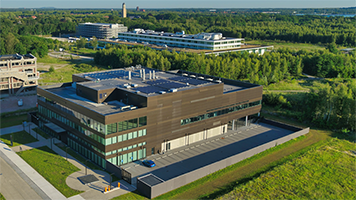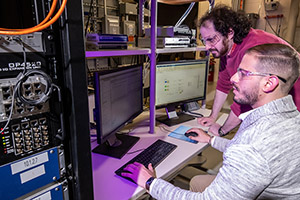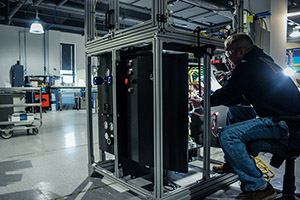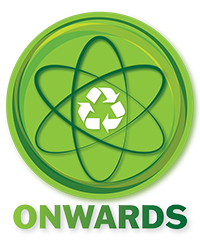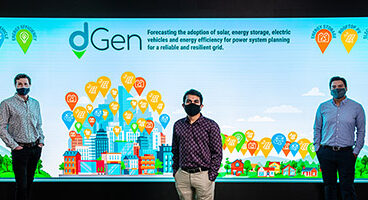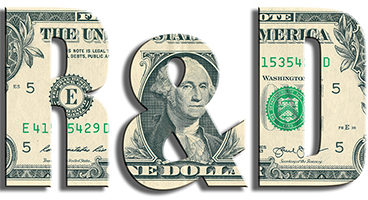ABB and CERN, the European Laboratory for Particle Physics, have identified significant energy-saving potential through a strategic research partnership focused on the cooling and ventilation system at one of the world’s leading laboratories for particle physics institutes in Geneva, Switzerland. The study included energy efficiency audits that helped to identify a savings potential of 17.4%…
New NPL neutron facility boosts UK’s nuclear energy, defense, and fusion research capabilities
The National Physical Laboratory (NPL) has announced a new neutron measurement facility that will play a critical role in the safe and secure operation and continued development of the U.K.’s nuclear energy, defense, and fusion research sectors. The facility consists of a new particle accelerator and is one of only a few known facilities worldwide…
Thermo Fisher Scientific sets 2030 renewable goal with solar developer ib vogt
Thermo Fisher Scientific Inc. has announced a 15-year virtual power purchasing agreement (VPPA) with international solar developer ib vogt. Thermo Fisher’s 91-megawatt portion of the Serbal solar project will deliver approximately 192,000 megawatt hours of renewable electricity annually. Eurofins Scientific, a bioanalytical testing company, collaborated in the aggregated deal for a 36-megawatt portion of the…
U.S. DOE announces intent to issue $4.8M in secure communications development funding
The U.S. Department of Energy (DOE) announced a notice of intent (NOI) for the Office of Electricity to issue a $4.8 million funding opportunity announcement (FOA). This FOA aims to support the development and demonstration of technologies, tools, or systems that enable secure data and control messaging between grid edge infrastructure and distribution system operators.…
Mote kicks off second biomass to hydrogen project in Northern California
As more utilities, industries, and transportation providers look to clean hydrogen to reduce carbon emissions, Mote Inc. has received $1.2 million in grant funding from the U.S. Forest Service, the California Department of Conservation, and the California Department of Forestry (CAL FIRE) to establish its second biomass to hydrogen and carbon sequestration plant in partnership…
US Department of Energy offers $30M in awards to ‘supercharge’ energy storage
From the U.S Department of Energy The U.S. Department of Energy’s (DOE) Office of Electricity (OE) announced more than $30 million in awards and funding opportunities at the Energy Storage Grand Challenge (ESGC) Summit in Atlanta. The opportunities include two $15 million Funding Opportunity Announcements (FOAs) for energy storage innovations: one related to long-duration energy…
$14.7M allotted for microgrid solutions for underserved and indigenous communities
To bring microgrid solutions to underserved and Indigenous communities, the U.S. Department of Energy (DOE) announced a $14.7 million Funding Opportunity Announcement (FOA) for multi-year research, development, and demonstration (RD&D) of microgrid-related technologies. The goal is to bring microgrid solutions to underserved and Indigenous communities in remote, rural, and islanded regions in the United States.…
U.S. Department of Energy announces NOI for $4M in sensor data analytics demonstrations funding
The U.S. Department of Energy (DOE) announced a notice of intent (NOI) for the Office of Electricity (OE) to issue a $4 million funding opportunity announcement (FOA). This FOA aims to enhance grid reliability and resilience given the availability of advanced data collection and analysis to develop the grid of the future. “The electric power…
Grengine is first plug-and-play, portable storage system that provides green energy
Grengine, a developer of the world’s first stackable, modular energy storage system, announces it has named Erin Rand as its new CEO, while founder and former CEO, Connie Stacey, will move into a new role as CTO. Formerly known as Growing Greener Innovations, the company also publicly announced its new corporate brand: Grengine. The new…
N.Y. agencies announce new energy storage technology to benefit public power
The New York Power Authority (NYPA) and the New York State Energy Research and Development Authority (NYSERDA) announced that a first-of-its-kind battery energy storage system (BESS) using patented, high-safety, lithium-ion (Li-ion) superCell technology is delivering energy peak shaving capabilities to NYPA’s White Plains offices, as part of a demonstration project. The BESS developed by Cadenza…
Industry partners use ORNL software to trim carbon footprint of buildings
From Oak Ridge National Laboratory: Two years after the U.S. Department of Energy’s Oak Ridge National Laboratory provided a model of nearly every building in America, commercial partners are using the tool for tasks ranging from designing energy-efficient buildings and cities to linking energy efficiency to real estate value and risk. International companies like Google…
Rensselaer researchers to focus on improving life and efficiency of nuclear reactors
Rensselaer Professor Jie Lian has been awarded $500,000 from the U.S. Department of Energy as part of the Nuclear Energy University Research Program (NEUP) to conduct research and develop new materials that will make advanced nuclear reactors more resilient and economically efficient. Dr. Lian, the principal investigator of the project, will be joined by collaborators…
Researchers measure photovoltaic external quantum efficiency to transform the future of solar cells
Researchers at Swansea University, U.K., have proven that it is possible to achieve near-unity charge generation quantum yields in organic solar cells. These findings present a route for designing and constructing higher-performance solar cells, which help to secure the future using renewable energy sources to meet sustainability goals. The research, led by Dr. Wei Li…
U.S. DOE grants $25M to advance clean hydrogen technologies for electricity generation
From the U.S. Department of Energy The U.S. Department of Energy (DOE) has announced $24.9 million in funding for six research and development projects to support the advancement of clean hydrogen for electricity generation. DOE will partner with private companies to research advanced technology solutions that could make hydrogen a more available and effective fuel…
SOLiTHOR seeds $10.6M to develop a new solid-state battery cell technology
SOLiTHOR, the newly created spin-off company from imec – partner in the European energy R&D innovation hub Energyville – is spearheading the development, manufacturing and commercialization of innovative solid-state lithium (Li) battery cell technology to reliably and economically offer high energy storage solutions. SOLiTHOR raised $10.6 million (€10 million) in a seed investment round led…
Powering the moon: Sandia researchers design microgrid for future lunar base
From Sandia National Laboratory Sandia National Laboratories is well-known for designing reliable and resilient microgrids for military bases and vital city services. Now, Sandia researchers are working with NASA to design one for the moon. This is not the first time Sandia has partnered with NASA to power equipment on the moon. In fact, Sandia…
Advanced Ionics secures $4.2M for decarbonization of industrial hydrogen production
Advanced Ionics, a provider of next-generation industrial electrolyzers that can produce hydrogen for less than $1/kg, has announced the closing of its initial financing of $4.2 million led by Clean Energy Ventures, a venture capital firm funding early-stage climate tech innovations, with participation from SWAN Impact Network. By requiring significantly less electricity than other electrolyzers,…
The R&D 100 winner of the day: Eco-Mobility with Connected Powertrains
Southwest Research Institute developed Eco-Mobility with Connected Powertrains with Toyota Motor North America and the University of Michigan to achieve over 20% energy savings and reduced carbon emissions in connected and automated vehicles. This technology features algorithms, software and testing tools for route, speed profile and power flows to lower fuel consumption by leveraging vehicle-to-vehicle,…
Argonne to host webinar exploring benefits of replacing fossil fuels with hydrogen
Join Argonne experts for “Science at work: Combating climate change with hydrogen,” at 11:00 a.m. CDT, Wednesday, May 11, 2022, as they explore the environmental and economic benefits of replacing fossil fuels with hydrogen. Replacing fossil fuels with hydrogen could turn manufacturing and transportation into green industries. Companies can use hydrogen to reduce their carbon…
US Dept. of Energy funds Rensselaer’s development of technologies to reduce nuclear waste and advance clean energy
Rensselaer Polytechnic Institute has been awarded $607,505 from the U.S. Department of Energy Advanced Research Projects Agency – Energy (ARPA-E) to help develop technologies to resolve the waste and storage challenges associated with Advanced Nuclear Reactor fuel cycles. The project is funded through ARPA-E’s “Optimizing Nuclear Waste and Advanced Reactor Disposal Systems” (ONWARDS) program, which…
Growing zinc battery initiative welcomes startup Zēlos Energy
Silicon Valley startup Zēlos Energy announces plans to join the Zinc Battery Initiative (ZBI), the voice of the zinc battery industry. ZBI’s rapidly growing membership is comprised of leading zinc battery manufacturers, including Zēlos, which has developed a sustainable, safe zinc-manganese battery designed as an alternative to lead acid and lithium-ion batteries in a variety…
R&D 100 winner of the day: dGen
National Renewable Energy Laboratory’s dGen is an open-source software that simulates customer adoption of distributed energy resources (DERs) through 2050. dGen is used by government and grid planning organizations to predict future energy systems at high spatial resolution and under diverse scenarios. It is an engine for equitably and cost-effectively integrating more DERs. The opensource…
R&D 100 winner of the day: UCC: Ultraconductive Copper-CNT Composite
Ultraconductive Cu-CNT composite, from Oak Ridge National Laboratory, is a new class of high-performance conductors in which carbon nanotubes (CNTs) are incorporated into a copper (Cu) matrix, demonstrate improved electrical conductivity, higher current-carrying capacity, and improved mechanical properties compared to pure Cu. Growing demand for electrical energy and increasing need for more energy-efficient power delivery…
Hydrogen and coal are powering the future, in this week’s R&D power index
The R&D World Index (RDWI) for the week ending February 25, 2022, closed at 5,172.49 for the 25 companies in the RDWI. The Index was up 1.92% (or 97.38 basis points) from the week ending February 18, 2022. The stock of 13 RDWI members gained value from 1.05% (Sanofi SA) to 5.93% (Intel). The…
National Energy Storage Summit to jumpstart America’s energy storage future
On March 8 and 9, Lawrence Berkeley National Laboratory (Berkeley Lab) is hosting the National Energy Storage Summit, a virtual public event that will connect thought leaders across industry, government, communities, and the research enterprise to catalyze partnerships and accelerate solutions around specific challenges to America’s energy storage future. Exponential energy storage deployment is both…

